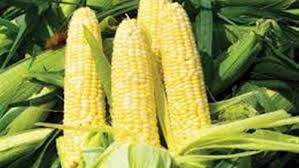Rome – Agricultural commodities are going through a period of lower and less volatile prices, according to the FAO Food Outlook released today.
After several dramatic upward price spikes from 2007 through early 2011, most cereal and vegetable oil prices are on a trajectory that is both steady and declining, the Outlook reports in a special feature.
Among the reasons are high inventory levels, sharply lower oil prices and the renewed strength of the U.S. dollar, none of which appear likely to be reversed in the short term, although unexpected shocks, such as weather-driven impacts on harvests, can never be excluded.
The FAO Food Price Index, a trade-weighted index tracking international market prices for five major food commodity groups, fell to a six-year low in August. New figures, also released today, show it inched up by about two-thirds of a percentage point from its August low to 165.3 points, which is still 18.9 percent less than a year earlier.
“The takeaway message here is that statistically, the most recent shifts in behavior foresee downward price momentum with lower volatility,” Adam Prakash and Friederike Greb, both commodity specialists at FAO, write of their analytical findings.
The price path of the past few years, and the prospective path ahead, are not the same for all food groups. Rice prices tend to move independently from other grains, while sugar prices have always been volatile, having lost and gained over half their value more than 12 times since 1990. Meat and dairy products fit the broad trend but, as more perishable commodities, they often do so with a time lag.
Staple grains are at the core of the declining price trend, as a result of several years of robust harvests around the world as well as stockpiling that has taken reserves to record highs. Such precautionary reserves are now being slowly unwound, and global cereal stocks will likely close the 2016 season at 638 million tons, down four million tons from their opening levels, according to new forecasts in FAO’s latest Cereal Supply and Demand Brief.
Meanwhile, this year’s world cereal production projection was notched down to 2.534 billion tonnes, six million tons below last month’s forecast, and 0.9 percent below 2014’s record level, due mostly to reduced output of U.S. maize, for which prices have fallen by half since July 2012.
Low prices and food security
Lower food prices “seem to be a boon to food security” and are indeed just that for households who spend a large share of their income on food purchases, the authors note.
Indeed, the global food import bill is expected to fall in 2015, dropping to USD1.09 trillion, a five-year low, and down almost 20 percent from the record high of USD1.35 trillion in 2014. That drop, to which cereals, dairy products, meat and sugar all contributed substantially, was also encouraged by declining freight rates.
However, the authors warn that calculating overall benefits also requires considering that lower prices reduce farmers’ incomes.
Slimmer margins for rural farmers are likely to reduce on-farm investments, whose past inadequacy was largely blamed for the sharp price hikes of the last decade. Low returns may also require more incentives for more investments in agriculture and rural economic services ranging from credit, to roads and warehouse facilities.
Trade flows declining
While global production is robust and inventory still high, the volume of cereals being traded internationally is declining, and forecast at around 364 million tons for the 2015/16 season (July/June), down 2.9 percent from the previous period.
The downward trend is driven by wheat, mostly due to lower imports in Asia – especially the Islamic Republic of Iran – and North Africa, and by coarse grains, where demand from Asia is lower, even though Africa and Europe are both expected to increase their imports.
Trade in cassava, meanwhile, is poised to grow by 19 percent and to hit a record high, due mostly to demand from China for a cheaper raw material for its animal feed, energy and industrial sectors.
Trade volumes in seafood are also rising. Currency movements cast a heavy shadow over this sector, as a strong dollar has made the U.S. a major destination for shrimp exports while weaker currencies elsewhere impact a range of sectors from Norwegian salmon to Chinese fish processors reliant on imports. Still, overall fish production is forecast to grow by 2.6 percent this year, driven by aquaculture expanding at nearly twice that rate.
Prepared by:
Sh. Kh

